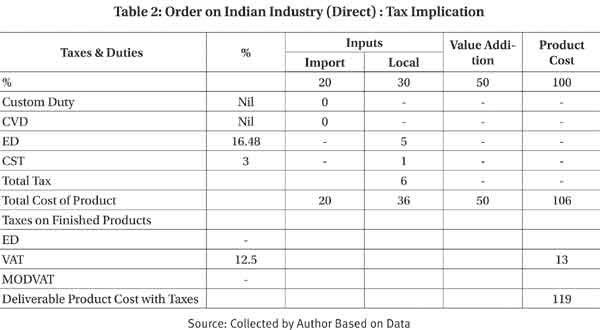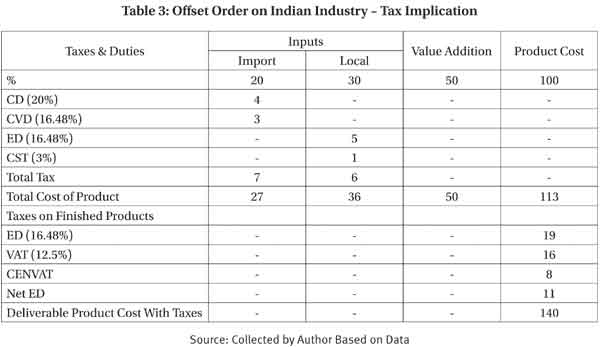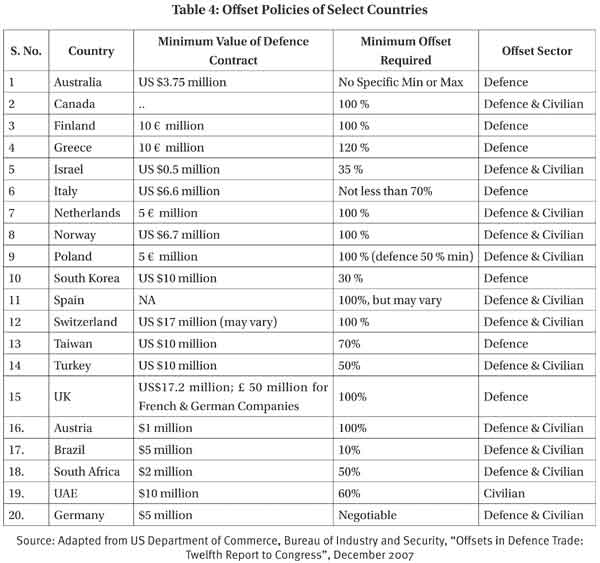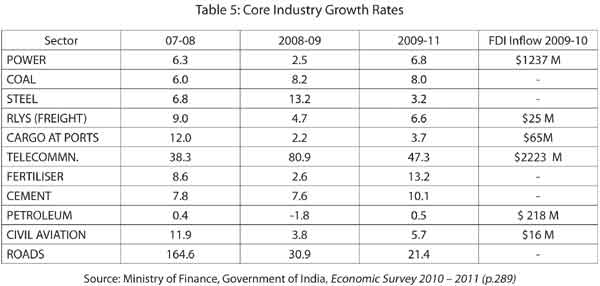- China is quite “explicit in the type of foreign investment that is ‘prohibited’, ‘permitted’, or ‘encouraged’, with the latter category focusing on advanced technologies.” To induce foreign investors into its high-tech industries China provides various incentives such as tax rebates and lower tariff rates.
- India’s FIPB, while reviewing the incoming FDI proposal, needs to adopt a similar approach in order to ensure that the FDI leads to technology transfer to Indian companies and their value addition is increased over the years. Various incentives such as tax rebates and the like could also be provided to induce higher technology through FDI.
Level Playing Field
There is one more issue and that is a level playing field, which private industry has been constantly clamouring for in the matter of taxes and duties.
Private industry feels that the offset benefit reduces from 30 per cent to 21 per cent* because of the present structure of taxes and duties. This is an anomalous situation as in the Buy (Global) category the ED, ST element of the Indian competitor is ignored while foreign supplier’s CIF cost is taken into account for determining L1. However, for an Indian partner discharging offset commitment for an Indian programme, all these demands including CD on import elements are charged. Tables placed below will explain this position.
The Indian Industry also feels that the MoD treats offsets on par with indigenous suppliers to the MoD or treats them as export. An empowered Committee should finalise these long pending issues.
Indirect Offsets
The other disappointment in the new policy has been overlooking the large range of indirect offset benefits which the policy should have availed as many countries do. As would be seen from the following Table, most of the countries have a combination of both Civil and Defence sectors in their offset policy. Besides, the minimum value of contract for offsets is far lower than the threshold in vogue in India’s offset policy.
It would thus be seen that 60 per cent of the countries opt for both direct and indirect offsets, while the rest target defence-specific or civil sector benefits. In the USA, from 1993 to 2009, the total contract value of offsets was $76 billion with 46 countries. Of these, 37 per cent was direct and 63 per cent, indirect. Eriksson, in his study of European defence industries of the period between 2000 and 2005, brings out that offset deals worth $4.2 billion were concluded of which direct offsets were 40 per cent, while indirect defence offsets and civil indirect offsets were 35 per cent and 25 per cent respectively.
There is a critical linkage between FDI limit and technology infusion…
As per the Twelfth Plan (2012-2017), India’s total fund requirement for infrastructure development will be around $1,025 billion according to the Economic Survey, 2010-2011. It has been proposed that such massive funding requirement is provided through 50:50 public partnerships as against 70:30 which was the experience during the Eleventh Plan. This entails massive investment requirement in different core industry sectors. The growth trends in the core industry sectors are given in the Table below.
Besides, the social sector is an underdeveloped segment in India, as India ranks 119 out of 169 countries with a score of 0.519 in the Human Development Index. The trend in the social sector expenditure as a percentage to central government expenditure and GDP is indicated in Table below:
It would be seen from the above tables that infrastructure sector, particularly the telecom sector shows significant growth momentum because of the liberal FDI policy. However, the allocation to social sectors remains abysmally low (four to five per cent) compared to developed countries which spend close to ten per cent of their GDP on education and health. Besides, close to 22 per cent of India’s population live below subsistence level (Poverty Line) with very little growth in employment in the organised sector (-0.65 per cent in the public sector and 1.75 per cent in the private sector) during 2009 -2010. The massive investment needs in infrastructure need to be complemented with human resource development and inclusive growth. The offset policy must include these sectors as part of the indirect offsets. The key to success would be by putting in place a proper manufacturing, and social sector policy by dove-tailing defence industry capability as a subset of this larger policy mosaic.
Conclusion
India embarked on the liberalisation path in 1991 by dismantling the license-and-quota-permit-raj. In the defence sector, the wave of liberalisation came a decade later by encouraging 100 per cent private sector participation and allowing 26 per cent FDI. The half-baked policy of 2005 has now embraced a larger canvass by including technology transfer, multiplier and civil aerospace, homeland security and civil shipbuilding sectors in its ambit. However, the expectation of critical technology inflow and concomitantly improvement in SRI in critical sub systems like weapons, propulsion and sensors are unlikely to materialise unless the FDI policy is further liberalised. Defence industrialisation strategy must be made a part of the overall national manufacturing capability strategy. The social sector through its social overheads and infrastructure improvement as the building block for economic development must be part of the overall development strategy. Accordingly, indirect offsets must be part of the offset policy with a mix of direct and indirect offset options as many countries practice. Defence cannot be a holy cow looking with blinkers at a national development strategy. Furthermore, a significant mark up in investment in R&D by all stakeholders will facilitate technology absorption. Defence technology funding recommended by Defence Production Policy (2011) must be operationalised early. Else, the pious platitude of improving self-reliance through the offset policy in critical technology will remain a pipe dream.








